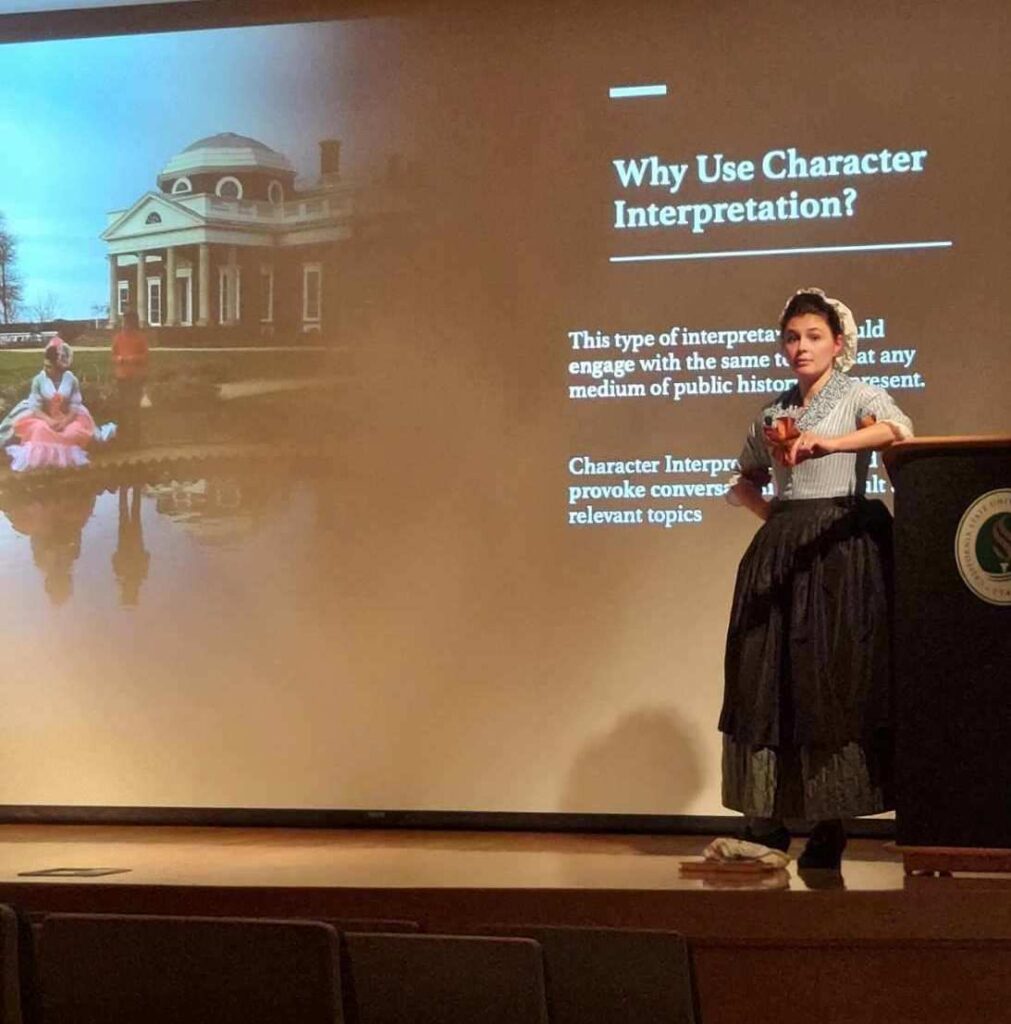By Nicole Brown
It is a powerful fact that the past informs our present. The way our world operates on local, national, and global levels is permanently linked to historical events that scholars study and reflect upon. However, the “past” can sometimes feel unbelievably removed from our day-to-day lives; so remote does this ethereal past feel, we sometimes cannot understand how or why it matters as we move through our daily existence.
As the Lab Assistant at William & Mary’s Bray School Lab, my role is to support exploration of the history and legacies of the Williamsburg Bray School. Operating between 1760 and 1774, this school educated upwards of 350 children during its duration. Controversial in its time, the mission of the school was to teach basic reading, spelling, sewing and etiquette skills to enslaved and free Black children with the overarching goal of providing religious instruction in the Anglican tradition.
Making this history come alive is no small feat. I must understand people’s backgrounds with historical documents, their learning styles, their life experiences. Although having students work on transcriptions of letters and conduct archival research at the Lab makes this history speak to them, that method doesn’t work for everyone. Sometimes I don an eighteenth-century costume and travel all the way across the country to speak with students as Ann Wager, teacher at the Williamsburg Bray School.

Recently, I had the chance to speak at Sacramento State as a scholar and a museum professional. Although my work portraying Ann Wager is a career outside of my role at the Bray School Lab, these roles are interconnected. By making history feel immediate to a group of students who had never traveled outside the state of California, I was able to engage them better when I stepped “out-of-character” and spoke about the history of the Williamsburg Bray School. Suddenly, the remote past and our country’s legacy surrounding race, education, and religion felt immediate to these undergraduates. This is the power of finding ways to connect the past and present.
I introduced the students to Mrs. Wager in the spring of 1774, just a few months before her untimely death. Mrs. Wager’s legacy at the Bray School was long-standing by 1774, as was her experience with the school itself. The students were most compelled by Mrs. Wager’s seemingly inconsistent stance on encouraging Black education while also promoting the institution of slavery. Foreign to us in the 21st century, Ann’s divergent opinions on education and slavery were both common and controversial in colonial Virginia. On the one hand, the Bray School promoted education for enslaved and free Black children in an urban environment where much of the population was expected to be literate. On the other hand, Mrs. Wager was acutely aware (perhaps more than other members of the white community) that education which meant to indoctrinate could also empower students to achieve beyond such limitations.
I have extensively researched and portrayed Ann Wager at the Colonial Williamsburg Foundation for almost five years. The Foundation and the Lab work very closely as part of the Williamsburg Bray School Initiative. The idea behind this partnership is to collaborate on and share “research, scholarship and dialogue regarding the interconnected, often troubled, legacy of race, religion and education in Williamsburg and in America.” I am very much a part of both sides in this relationship, especially when it comes to Ann.
Mrs. Wager’s life is a series of fragmentary facts that are complicated by her fraught role as teacher at the Williamsburg Bray School. In the fourteen years that Ann Wager taught reading, spelling, sewing, etiquette, and religious doctrine to her students she never once openly challenged the institution of slavery. Indeed, she appears to have been in support of the Bray School’s pro-slavery stance. However, using the documents I have available on Mrs. Wager it appears that the school challenged her opinions on colonial education while also conforming to its rigid social demands.
The ways in which I connect past and present surrounding the various experiences of Ann Wager is just one way to bring the history of the Williamsburg Bray School to life. A central goal at William & Mary’s Bray School Lab is animating history in academic settings while also creating connections for the Williamsburg community at large. How we lab isn’t just about methodological approaches or historical documents: it’s about inspiring people to see the various ways that the Williamsburg Bray School speaks to the legacy of race, faith, and education in our world today. Connecting the past to the present is not merely an academic exercise. It is a call for social justice. By following the Bray School’s story into present-day, we can find ways to make meaning in our current world.

Great Work Nicole. I Can tell this is more than a job for you.
Thank you Dr. Ellis! It is an honor to do this work in any way I can.